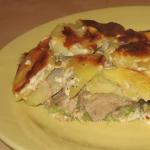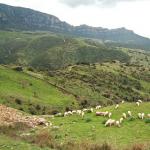If you don't have an aunt, or To have or not to have
Happy is the man who has many relatives! He is not alone, he knows what the warmth of a home, pride in children and the wisdom of parents are; he is looking forward to the next family holiday and is not afraid of being lonely in old age.
But on the other hand, how good it is if no one pesters you with their wise advice, if you don’t have to worry about the problems that children cause, if no one teaches you how to “live” and doesn’t rashly threaten you with deprivation of your inheritance.
Here’s a paradox: relatives sometimes get tired of each other, and lonely people dream of taking care of someone. Today they increasingly say that it is easier to live alone: there are fewer problems. But not so long ago, families were large, when several generations of close and distant relatives lived under one roof or in the same neighborhood. People of the same kind were united by common interests and values. We still say: “He looks like his uncle; the spitting image of grandma.” We no longer know whether the child resembles his great-grandfather. The circle of relatives has narrowed: mother, father, grandmother, grandfather, brother, sister... The further the relationship, the more difficult it is to determine who is “the seventh water on jelly.” But the real confusion begins after the wedding, when new relatives appear.
The terminology of kinship is complex and today is thoroughly forgotten. In everyday life, we use no more than ten of the most well-known definitions and are sometimes forced to resort to verbal heaps: “He is my husband’s brother, she is my husband’s brother’s wife.” But in the Russian language, each relative has its own name, and behind each name there are centuries-old ideas, a culture of relationships, and family history. Not every nation can afford such a luxury.
There are three groups of kinship ties:
. immediate relatives - blood relationship,
. relatives - relationship by marriage,
. and, finally, non-family ties.
Before looking into the dictionary of kinship relations, let's try to understand the complex picture of intertwined kinship ties.
The apple doesn't fall far from the tree, or blood kinship
If the parents are common, then the relationship is blood. Blood relatives are the closest people. Special family traits affect the way of life and the choice of profession. Blood relatives have characteristic external features. The family resemblance manifested in children is especially touching. “What does a newborn look like?” - one of the most important questions. It seems impossible to get confused in this relationship. Mother, father, uncle, aunt, brother, sister... But even here there is reason to think.
Brothers and sisters
In one generation, the people closest to each other are brothers and sisters. If you are an only child, you have no blood relatives in your generation. Brothers and sisters can be blood, blood, or full blood if they have both a mother and a father in common. Or half-blooded - born from the same father. Or half-uterine - born from the same mother, but from different fathers.
Echoes of how close the bond between brother and sister is can be found in ancient folk customs, riddles, and proverbs. The blue-yellow forest flower Ivan-da-Marya had a different name - brother-and-sister. At her sister’s wedding, her brother sat next to the bride for “protection” from the groom, who had to pay him a ransom for his future wife. In a bratin (a copper or wooden half-bucket bowl) drinks, beer, and kvass were distributed to the entire brethren and poured into wooden cups and glasses.
Camaraderie, friendship, affection, close connection - all this is defined by the word “brotherhood”. And with the words brother, brother, they address not only relatives, but also friends, comrades, like-minded people, participants in a common cause.
Fathers and Sons
The closest family connection exists between parents and children. Father, mother, son, daughter - people from two neighboring generations - are closest to each other.
We say: Mother Earth, Motherland, Mother Volga. Even strangers honor older women as mother or matushka.
In popular belief, a father is the eldest, the first, the main one, deserving of respect, wise.
Father's house, father's love, fatherland, fatherland - words with a common root. The word “father” has long been forgotten - this is how the son and family heir of his father were called.
For a man, as a rule, the birth of a son is a reason for special male pride. To this day, a man who only has daughters is sometimes called a “marriage-maker.” It was believed that the son was a parental assistant, and the daughter would leave the parental home and go to live with her husband. Oddly enough, these prejudices are still alive today.
Grandfathers and grandmothers, grandchildren and granddaughters
Grandfather, grandfather - father of a parent;
grandmother, grandmother - mother of the parent;
grandson - son of a child;
granddaughter - the daughter of a child.
Happy are families in which grandparents help raise children. There is nothing more selfless than love for grandchildren. In the traditional view, grandmother is a round, kind old lady. Maybe that’s why culinary experts call babka a tender, airy pastry, like Easter cake, baked in a tall pan.
Grandfathers dream of seeing their dreams come true, their continuation, in their grandchildren. Different types of burdock and thistle are popularly called grandfather or grandfather. Probably not by chance. Grandfathers love to remember the same things and repeat the same story.
Great-grandparents
Our great-grandmothers lived not by light, but by family and home.
Great-grandfathers and great-grandmothers are not so common these days. To become “great”, you need to give birth to children, raise grandchildren and wait for the birth of your grandchildren’s children. The prefix “pra” is added to words in order to emphasize ancient origin. So the first owner of something was called the right owner or right owner. The peasants called unharvested carrion rye, which grew by self-sowing and yielded a harvest in the second year, “great-carrion.”
The parents of the great-grandfather and great-grandmother are called ancestors and great-great-grandmothers, the even older generation is called great-great-great-great-grandfathers, and the oldest generation is called great-great-great-grandfathers. Nowadays, most people have vague ideas about the ancient predecessors of the family - their ancestors. And they even get offended if children call them this ancient word. But in vain.
Uncles, aunts and nephews
If your parents had a brother or sister, then for you they will be an uncle or aunt. And their children will be your cousins, or, as they sometimes say, cousins. These are also blood relatives, but not as close as direct blood relatives, therefore, what happens between cousins is not family affection, but real passion. And then there are second cousins (from cousins, uncles or aunts), fourth cousins (from second cousins), and so on brothers and sisters.
Your uncle's wife will be your aunt, and your aunt's husband will be your uncle. This relationship is not blood. Uncles and aunts most often become godparents for their nephews.
There are also little aunts and even a great aunt - you will find out who is so called by reading the Dictionary of Family Relations.
“Uncles” in Rus' were treated with respect. Previously, a teacher was assigned to care for or supervise the child - he was called an uncle. And every recruit in the regiment had an uncle - a mentor from old soldiers. The first barge hauler pulling the barge was called uncle. At weddings in the central regions of Russia, the groom's father was called "uncle." The bride's uncle took part in the wedding ceremony: he held a scarf in front of her while her braid was unbraided.
Nephews are people of your family, your tribe. That’s what they said about a clan in which there are many tribes: a tribal clan. And about a person from a large family - a tribal family man. Who can now guess who was previously called brother or sister or sister? But we are talking about a nephew, if he is the son of a brother, and a niece, if she is the daughter of a sister. The sister's son was formerly called netiy, and the brother's daughter was called bro. If your spouse's brother or sister has a daughter or son, they will also be considered your nephews.
Such apt expressions have come down to us from the depths of centuries. “God’s nephew” is the one to whom all blessings are given freely. “Table nephew” - a poor relative living in the house, took root. “Nephew” - to impose oneself, to seek protection from distant relatives.
There may be first cousins, second cousins or great-nephews in the family. To avoid confusion, the word “nephew” was often used to describe any distant indirect relative. In some eastern regions, when providing assistance to a distant relative, and sometimes just a fellow countryman, they called him in their own way - nephew.
The family pot is always boiling, or Kinship by nature
When the newlyweds got married, they had new relatives. This relationship is otherwise called a property, from the word “one’s own”. Strictly adhering to the terminology, we must consider relatives acquired after marriage as in-laws.
After the wedding, the newlyweds lived together with their new relatives as one big family according to time-tested rules. In medieval Russian consciousness, the eldest male householder was the head of his “yard”: all “household members” were almost his property. A large stable family living in the “yard” consisted of several branches of relatives. Only the head of the family had the right to resettle some of them. Often they took in orphans, who, like their own children, were under the complete power of the head of the family. Such an act was considered a godly deed.
A clear hierarchy determined the position of each inhabitant of the house.
Husband and wife
Becoming a husband meant proving your maturity, your readiness to be the head of the family and the master of the house. The husband was required to have courage, fortitude, and determination. The husband could turn out to be a person with a soft disposition - sexist, and if he immediately allowed his wife to command in family life - he showed effeminacy.
A married woman could be called, especially emphasizing her belonging to her husband, like this: a courageous wife, a courageous woman. Today these words are perceived almost as an insult, but previously they sounded respectful. A masculine or simply determined and stern woman could be nicknamed like that - a peasant, a peasant. Any man wanted to see a husband-pleasing wife, that is, one who knew how to please her husband. A wife who was domineering, angry, envious, deceitful, mismanagement, and a philanderer became a particular misfortune for the husband. And whoever had a wise wife, people called him womanly.
Only the parents decided who their son would marry and live with; they themselves looked for a bride for him. They met the whole family and got married. Matchmaker and matchmaker are the husband's father and mother for the wife's family; the father and wife's mother are also called in the husband's family. After the wedding, both families became closest relatives.
Husband's family
The son brings his wife to his parents' house, and the daughter moves to live in her husband's house. In the new house, the will of the eldest man, the owner, and the eldest woman, the mistress, are respected. Now the parents of the spouses become the closest relatives. Previously, husband and wife called the parents of their spouses mother and father, recognizing that they were part of a new family with the rights of a child.
Today, in such a sensitive issue, there is complete freedom of choice. If you want, call me mom and dad, or by your first name or patronymic, or just by your first name, or aunt or uncle. It’s better not to rush: time will put everything in its place. And, of course, ask directly what type of address your new relatives prefer to hear.
The husband's parents for the young wife are father-in-law and mother-in-law. The son's wife is a daughter-in-law, and she is also a daughter-in-law. A woman will be a daughter-in-law in relation to her husband’s parents (father-in-law and mother-in-law), and her husband’s brother (brother-in-law) and his wife, and her husband’s sister (sister-in-law) and her husband. In addition, all relatives consider the wife of her brother-in-law to be a daughter-in-law. The wives of siblings are also daughters-in-law to each other. Sister-in-law is the wife's full sister. Brother-in-law is her husband. Brothers-in-law are those men whose wives are sisters to each other.
The wife of the brother-in-law. Consorts are women whose husbands are brothers.
Sister-in-law is the husband's sister. In a patriarchal family, she was higher in position than her daughter-in-law, her brother’s wife, and often the young ashya received more from her sister-in-law than from her grumpy mother-in-law.
The life of a daughter-in-law in the house of her husband's parents is a difficult lot. The morning after the first wedding night, the mother-in-law lightly hit her daughter-in-law with a whip, saying that this was “her husband’s thunderstorm,” admonishing her to live in the family submissively and obediently. With the marriage of their son, the family received a young worker. The reasons for the conflict between daughter-in-law and mother-in-law are very serious: the mother is jealous of her son for another woman, and the two housewives do not get along in the kitchen. In such cases, a kind of “harem” laws are established in the family, when female roles are clearly distributed: one is the eldest, the other is the beloved.
Of course, there are wise mothers-in-law, and advice and love reign in the family; there are other mothers-in-law - “neighbors in a communal apartment.” And they also say: “The mother-in-law remembers her youth and does not believe her daughter-in-law”... But the daughter-in-law could become the father-in-law’s favorite and receive special signs of attention from him. Then they said: “My father-in-law’s wife is a mistress.” A daughter-in-law could influence the fate of her husband’s younger brothers: “The first son is married by his father and mother, and the second by his daughter-in-law.”
Wife's family
A son-in-law is a daughter’s husband for the wife’s parents (father-in-law and mother-in-law), for her sister (sister-in-law), for her brother (brother-in-law) and for the latter’s wife. The wife's parents for the husband are father-in-law and mother-in-law. If a son-in-law came to the court, he was received as his own son. Smart parents did not offend their son-in-law; they tried to treat him properly during meetings. They avoided quarrels, because their daughters lived with him. The wife’s parents were afraid of their menacing and violent son-in-law: they wouldn’t get along with him, and in a quarrel he might even beat up the old people.
It is no coincidence that most of the jokes on a “related” topic are about the mother-in-law. Apparently, there were reasons to dislike the son-in-law: the daughter had a hard time in her husband’s family, so she had to teach the young man to be smart. If hostility arose between mother-in-law and son-in-law, it complicated the life of the whole family.
Fathers-in-law are much less likely to quarrel with their sons-in-law. Mature men do not invent non-existent shortcomings for their son-in-law, easily find common male topics for conversation and spend time doing their favorite activities. They intrude less into the lives of newlyweds with advice, do not bother with control, and do not educate. Perhaps to spite his wife.
Close ones, but not relatives
If parents have children in previous or subsequent marriages, they are considered half-siblings. The mother's husband, but not the father of her child, is the stepfather. The father's wife, but not the child's own mother - the stepmother. The step-son of a husband or wife during the next marriage of his parent (parent) is a stepson, and a step-daughter is a stepdaughter.
Russian folklore speaks unflatteringly about the stepmother: people did not believe that a woman could love someone else’s child as her own. It is no coincidence that the plant was named so: coltsfoot. Its leaves are smooth and cold on top, and warm and fluffy on the inside. They also say: “The other side is the stepmother.”
When adopted, a child was called an adopted child. The new parents—the named mother and the named father—considered the girl a named daughter and the boy a named son.
The imprisoned mother and father became close, but not relatives - people who were invited to the wedding to replace the natural mother and father of the bride and groom.
And after a newborn appeared in the family, he might need a mother, a nurse, a milk mother. To feed her meant almost becoming related to the baby. Older children were assigned an uncle for care and supervision. Such a guy raised the cavalry maiden Shurochka Azarova in the film “The Hussar Ballad.”
Men could fraternize by exchanging crosses and kissing three times. They became cross brothers. Fraternization was the result of great friendship or saving a life in battle. Girls' friendship, not related by kinship, was also secured by a peculiar ritual: the girls exchanged pectoral crosses. Then they called their friends that way - crusaders, brothers-in-arms, sworn sisters.
Spiritual kinship
Religious ties in families were strong and unostentatious. As required by the ritual, each little godson or goddaughter had a godfather and godmother. The godfather's father became a godfather, the son became a godbrother, and both godparents in relation to the godson's parents became godfathers: he is godfather, she is godfather. The godfather and godfather took upon themselves the responsibility of taking care of the religious education of their godson and in the event of the death of their parents, they took their place. Being a godfather to the first or second child in a family used to be considered a great honor.
They chose godfather and mother from close people: relatives or family friends. A pregnant woman was not called a godmother: it was believed that the godson would die. If newborns or young children died in families, the first person they met was taken as a godfather. Preference was given to godparents who had many godchildren alive.
An unmarried man, who was to become a godfather for the first time, chose a girl for baptism, an unmarried girl - a boy. It was believed that otherwise the girl risked remaining a century-old woman, and the guy a bachelor. There was a belief among the peasants that if the girl or guy who was invited to be godparents to the first child was older than the godson’s parents, then the girl would marry a widower, and the guy would marry a widow or woman older than him. Therefore, accordingly, they tried to make godmothers younger than their parents.
On Peter's Day (July 12), the godmother baked unleavened pies with cottage cheese for the godchildren. On Forgiveness Day (the last day before Lent), according to custom, the godfather went to the godfather with soap, and she went to him with gingerbread. According to the canons of Orthodoxy, godparents could not marry each other.
Dictionary of kinship relations
Grandmother, grandmother - mother of father or mother, wife of grandfather.
Brother is a son in relation to other children of the same parents.
Godbrother is the son of the godfather.
Brother of the cross, brother of the cross, brother named - persons who exchanged pectoral crosses.
Bro, bro, bro, bro, bro - cousin.
Bratanich is a brother's nephew.
Bro - cousin's wife.
Bratanna is her brother’s daughter, brother’s niece.
Brother - a cousin or distant relative.
Bratova - brother's wife.
Bratych is a brother's son, brother's nephew.
A widow is a woman who did not enter into a second marriage after the death of her husband.
A widower is a man who did not enter into a second marriage after the death of his wife.
A great aunt is a grandparent's sister (great aunt).
A great uncle is a brother of a grandfather or grandmother.
Branch - line of kinship.
Grandson - the son of a son or daughter, the sons of a nephew or niece.
A great-great-niece is the granddaughter of a first cousin.
Great-niece - granddaughter of a brother or sister (second cousin).
Grand-grandchild, grandson - being a relative in the third generation, second cousin.
Great-siblings are second cousins.
A great-great-nephew is the grandson of a first cousin.
A great-nephew is a grandson of a brother or sister.
Great-great-second cousin - grandson of a second cousin (second cousin).
Granddaughter, grandson - the daughter of a son or daughter, nephew or niece.
A great-aunt is the sister of a grandmother or grandfather.
Great-great-grandmother is the sister of a great-grandmother or great-grandfather.
A great-great-great-grandmother is the sister of a great-great-grandmother or great-great-grandfather.
A great niece is the daughter of a first cousin.
Cousin - daughter of an uncle or aunt.
A great aunt is a cousin of one's father or mother.
Cousin - related in the second degree.
Cousin - the son of an uncle or aunt.
A great-uncle is a brother of a grandfather or grandmother.
A great uncle is a cousin of one's father or mother.
A first cousin is the son of a first cousin.
A great-great-grandfather is the brother of a great-grandfather or great-grandmother.
A great-great-great-grandfather is the brother of a great-great-grandfather or great-great-grandmother.
Brother-in-law is the husband's brother. Grandfather (grandfather) is the father of the father or mother.
The godfather is the father of the godfather.
Dedina, grandfather - uncle's aunt.
Dedich is the direct heir of his grandfather.
A daughter is a female person in relation to her parents.
The named daughter is an adopted child, a pupil.
Dsherich is his aunt's nephew.
Daughter's aunt's niece.
An uncle is a person caring for a child.
An uncle is the brother of the father or mother, as well as the husband of the aunt.
Half-blooded children (consanguineous) - children born from the same father (consanguineous father), but different mothers.
Single-uterine children (one-uterine) are children born by the same mother, but from different fathers.
Half-uterine - born of the same mother, but from a different father.
A wife is a woman in relation to the man with whom she is married.
Zhenima, zhenishchka - unmarried fourth wife.
The groom is the one who has betrothed his bride.
Sister-in-law, sister-in-law, sister-in-law - the husband’s sister, sometimes the brother’s wife.
Son-in-law is the husband of a daughter, sister.
A knee is a branch of a clan, a generation in a genealogy.
A godmother is a participant in the baptism ceremony in the role of a spiritual mother.
Godson - godson.
Goddaughter - goddaughter.
A godfather is a participant in the baptismal ceremony in the role of a spiritual father.
Consanguinity - descent from the same parents.
Blood - about kinship within the same family.
Cousin - cousin.
Cousin - cousin.
Godfather is the godfather in relation to the godson's parents and the godmother.
Kuma is the godmother in relation to the godson's parents and to the godfather.
Little aunt - sister of father or mother (cousin).
Little uncle - brother of father or mother.
A mother is a woman in relation to her children.
The godmother, the godmother, is the recipient of the baptismal ceremony.
The named mother is the mother of the adopted child, the pupil.
Dairy mother - mother, nurse.
The planted mother is a woman who replaces the groom’s own mother at the wedding.
Stepmother is a stepmother, another wife of the father in relation to his children from a previous marriage.
A milk sister is a child (woman) nursed by someone else’s mother in relation to her children.
A foster brother is a child (male) raised by someone else's mother in relation to her children.
A husband is a man in relation to the woman he is married to.
Daughter-in-law is the wife of a brother or the wife of a son, as well as the wife of one brother in relation to the wife of another brother.
Illegitimate - born from parents who are not in a church marriage.
Homogeneous (consanguineous) - descended from the same father.
Monotuterine (one-uterine) - originating from the same mother.
A father is a man in relation to his children.
The godfather is the recipient of the baptism ceremony.
The named father is the father of the adopted child, the pupil.
The father is sociable, planted, dressed up - a man who replaces the groom's own father at the wedding.
Stepfather is a stepfather, another husband of the mother in relation to her children from a previous marriage.
The father is the eldest in the generation.
Fatherlander, stepfather - son, heir.
A stepdaughter is the stepdaughter of one of the spouses.
Nephew is the son of a brother or sister. Niece is the daughter of a brother or sister.
Nephew - relative, relative, fellow countryman.
Side (son, daughter) - a son or daughter who does not come from a legal marriage.
Generation - relatives of the same degree of kinship in relation to a common ancestor.
Fullbred - descended from the same parents.
Descendant is a person who comes by birth from some kind of family, a person in relation to his ancestors.
Great-grandmother is the mother of a grandfather or grandmother.
Great-grandmother is the same as great-grandmother.
Great-grandson is the son of a grandson or granddaughter.
A great-great-great niece is the great-granddaughter of a first cousin.
A great-great-niece is the great-granddaughter of a brother or sister.
A great-great-great-great-second cousin is the great-granddaughter of a second cousin.
A great-great-great-great-nephew is the great-grandson of a first cousin.
A great-great-nephew is the great-grandson of a brother or sister.
A great-great-great-great-great-great-great-great-great-great-great-grandson of a second cousin.
A great-granddaughter is the daughter of a grandson or granddaughter.
Great-grandfather is the father of a grandfather or grandmother.
Great-great-grandmother is the mother of a great-grandfather or great-grandmother.
Great-great-grandson - the son of a great-grandson or great-granddaughter.
A great-great-great-great-great niece is the great-great-great-granddaughter of a first cousin.
A great-great-great-niece is the great-great-great-granddaughter of a brother or sister.
A great-great-great-great-great-great-great-great-great-great-great-great-great-great-great-great-great-great-great-great-great-great-great-great-great-great-great-great-great-great-great-great-great-great-great-great-great-great-great-great-great-great-great-great-great-great-great-great-great-great-great-great-great-great-great-great-grandniece
A great-great-great cousin is the great-great-grandson of a first cousin.
A great-great-great-nephew is a great-great-great-grandson of a brother or sister.
A great-great-great-great-great-great-great-great-great-great-great-great-great-grandson of a second cousin.
A great-great-granddaughter is the daughter of a great-grandson or great-granddaughter.
Great-great-grandfather - the father of a great-grandfather or great-grandmother.
Progenitors are the first known pedigree couple from which the family originates.
Grandfather - parent of great-great-grandfather, great-great-grandmother.
An ancestor is an ancient predecessor in the family, as well as a compatriot from previous generations.
Married - descended from the same parents, but born before marriage, and then recognized in it.
Adopted daughter is an adopted child of someone else, a girl.
Adopted son is an adopted child of someone else, a boy.
Fifth cousin - a relative in the fifth generation (by great-great-grandfather).
A clan is a series of generations descending from one ancestor, as well as a generation in general.
Parents are father and mother in relation to their children.
A parent is the same as a father.
A parent is the same as a mother.
Native - descended from the same parents See blood, full-born.
Relatives are relatives.
An ancestor is the first known representative of the genus from which it originates.
Pedigree is the same as genealogy.
Pedigree is a list of generations of one clan, establishing the origin and degree of relationship.
A relative is someone who is related to someone.
Kinship is a relationship between people created by the presence of common immediate relatives.
Matchmaker (m), matchmaker (f) - the parent of one of the spouses in relation to the parents of the other spouse.
Father-in-law is the father of the husband.
Mother-in-law is the husband's mother.
Step-brothers are brothers and sisters descended from different parents.
Stepchildren are children who are brothers or sisters of their stepfather or stepmother.
A relative is a person who is related to someone.
Property is a relationship of closeness between people that arises not through kinship, but from a marriage union (the relationship between a spouse and the blood relatives of the other spouse, as well as between relatives of spouses).
Brother-in-law is the husband of a sister-in-law (wife's sister).
Brothers-in-law are persons married to two sisters.
Sister-in-law is the wife's sister.
Seventh cousin - being a relative in the seventh generation (by great-great-great-great-great-grandfather).
Family is a group of relatives living together.
Sister is the daughter of the same parents or one of them in relation to their other children.
Sister, sister, sister - cousin.
Sister - cousin, daughter of mother's or father's sister.
Sister, sister, sister (ancient Russian) - son of mother's sister (nephew by sister).
An orphan is a child or minor who has lost one or both parents.
A daughter-in-law is a son’s wife in relation to his parents, a daughter-in-law.
The wife of a brother-in-law, the wife of two brothers in relation to each other.
Spouse - husband.
Spouse - wife.
A son is a man, a boy in relation to his parents.
Godson (godson) is a male person in relation to the recipient.
The named son is an adopted son, a pupil.
Father-in-law is the wife's father.
Aunt, aunt - the sister of the father or mother, as well as the wife of the uncle.
Mother-in-law is the mother of the wife.
A second cousin is a cousin of a grandfather or grandmother.
A second cousin is the daughter of a second cousin.
A second great-grandmother is a cousin of a great-grandfather or great-grandmother.
A second great-great-grandmother is a cousin of a great-great-grandfather or great-grandmother.
Second cousin - daughter of a great uncle (aunt).
A second cousin is a second cousin of a father or mother.
Second cousin - who is a relative in the third generation (by great-grandfather) (see grandson).
Second cousin - the son of a great uncle (aunt).
A second cousin is a cousin of a grandfather or grandmother.
A second cousin is a second cousin of one's father or mother.
A second cousin is the son of a second cousin.
A second cousin is a cousin of a great-grandfather or great-grandmother.
A second cousin is a cousin of a great-great-grandfather or great-great-grandmother.
Adopted is a female person in relation to her adoptive parents.
An adoptee is a male person in relation to his adoptive parents.
Last name is the same as clan, family.
A fourth cousin is a second cousin of a grandfather or grandmother.
A fourth cousin is the daughter of a fourth cousin.
Fourth great-grandmother is the second cousin of a great-grandfather or great-grandmother.
Fourth great-great-grandmother is the second cousin of a great-great-grandfather or great-grandmother.
A fourth cousin is the daughter of a second cousin (aunt).
A fourth cousin is a fourth cousin of a father or mother.
Fourth cousin - a relative in the fourth generation through his great-grandfather.
A fourth cousin is the son of a second cousin (aunt).
A fourth cousin is a second cousin of a grandfather or grandmother.
A fourth cousin is a fourth cousin of one's father or mother.
A fourth cousin is the son of a fourth cousin.
A fourth cousin is a second cousin of a great-grandfather or great-grandmother.
A fourth great-great-grandfather is a second cousin of a great-great-grandfather.
Sixth cousin - a relative in the sixth generation (by great-great-great-great-grandfather).
Brother-in-law - wife's brother.
Shurich is the son of his brother-in-law (wife's brother).
Yatrov (yatrovka) - wife of brother-in-law (husband's brother)
: Book "How to correctly call relatives? Who is related to whom?" — Irina Alekseevna Sinko
Man is a social being: interpersonal connections and the unification of people into various types of groups speak about this. People get married, give birth to children, and enter into special relationships called kinship. There are blood and social types of kinship. Family ties can be close or distant. The distance between relatives determines the degree of relationship. Who is who and who is related to whom? How to build a family tree and understand the intricacies of family relationships? You will find answers to these and other questions in our article.
Who are blood relatives?
Consanguinity is otherwise called biological or natural. There are several options:
- Direct kinship is established between relatives descended from each other, this is a parent and a child, for example, a mother and daughter.
- If several people are united by a common ancestor, then such a relationship is recognized as lateral.
- Two common parents are a sign of a full-blooded relationship, that is, this is a family relationship between the children of one married couple.
- A person who has the same parent in common with you can be considered a half-blood relative. Unfortunately, sometimes families break up, but after a divorce, people can remarry, and new children may appear. For example, if you have a common mother, and her daughter will be your half-sister, and her son will be your half-brother.
Types of social kinship
By getting married, a man and a woman create a new family. By registering their relationship, they bind themselves by marriage. If children are born to them, blood ties are established with them, but they remain socially related to each other. The relatives of the spouses have the same relationships among themselves: mother-in-law, father-in-law, son-in-law, mother-in-law, father-in-law, daughter-in-law - all these are relatives of a social nature.
Another type of social kinship is adoption.
In Christian families, religious ties between godparents, godmothers and godchildren are also considered social kinship.
Relatives near and far
Why are some relatives considered close and others distant? What connections unite people in a family? In order to determine the distance between members of the same family, there is such a thing as the degree of relationship. This situation is difficult to explain with any scientific definition and is much easier to explain in a specific situation. In simple terms, this is the connection of one person with another through birth. The more births between these individuals, the greater the degree of relationship. Here are some examples:
- A woman and the boy born to her are connected by one birth, which means that mother and son are a primary connection.
- Grandmother and granddaughter are connected by two births, therefore, there is a second degree of relationship between them.

Related lines
People born from each other in a series of successive degrees are usually called a family line. If you draw a family tree, then the faces will go one after another, in a chain. For example, son, father, grandfather, great-grandfather will make up four degrees of the paternal line, and it will be ascending; in descending, the same relatives will be designated as father, son, grandson, great-grandson. In addition, the child also has a maternal branch, which will be drawn similarly.
How to find out related degree?
This is easy to do, you just need to count how many births separate you from the selected family member. By being born from a father and mother, you get two people who are related to you in the first degree, a brother or sister will become the second degree, and an aunt or uncle will become the third.

Proof of relationship upon allocation
A person can draw up a will, according to which the inheritance is transferred according to his will, and not only immediate relatives can be heirs. Such a will can be challenged, but to do this you need to have evidence of the degree of relationship with the testator. If you happen to be one of the heirs, then you should know that the order of inheritance is determined by the Civil Code of the Russian Federation.
By bequeathing property to direct heirs - children, you can be sure that they will not have problems with its registration. If the will is made in favor of a person who is not a relative, then blood ties do not need to be confirmed. A certificate confirming the right of inheritance is issued in this case without determining the degree of relationship.
Situations often arise when it is necessary to confirm blood relationship. According to the law, children are the primary heirs. Sometimes it turns out that the deceased has illegitimate children who also have priority inheritance rights. Evidence can be either documents, such as a birth certificate, or oral testimony. The notary checks documents on kinship and identifies the heir. In cases where there are no documents confirming the degree of relationship, children may be included in the certificate of inheritance with the consent of other persons who have such evidence.
It is much more difficult to prove the relationship of subsequent degrees. You can confirm that you are the brother or sister of the deceased on the basis of issued birth certificates, which indicate the first name, last name and patronymic of your common parents. Other relatives also have to seek confirmation in the registry office archives, making written requests, and collect testimony from common relatives.

Who's Who: Kinship Terminology
What do people become to each other when they acquire family ties? Let's try to figure it out, starting with the simplest. Who are the blood relatives?
When a man has children, he becomes their father, and a woman in this case acquires the status of a mother. Both of them can be called by the general term - parents. A male child born is a son for them, a girl is a daughter, both of them are children. A boy in relation to other children of his father and mother is called a brother, a girl in a similar case is called a sister. The parents of the father and mother are grandparents, and the children of the son or daughter are the grandson or granddaughter. To further generations the prefix “great-” is added, and relatives are called great-grandparents, great-grandmothers, great-grandchildren and great-granddaughters.
These connections are simple and understandable to every person. The situation is more complicated with blood relatives not in a direct line. Children of sisters and brothers are cousins in relation to each other, children of cousins are second cousins, and so on. Your mother's or father's brother will be your uncle, and your sister will be your aunt.

New family - new relatives
Even more confusion arises in relationships through marriage. By creating a family, a man and a woman become spouses, being husband and wife to each other. The husband's father and mother are called father-in-law and mother-in-law, and the wife's parents are called father-in-law and mother-in-law. In relation to the parents of the spouses, the married couple are called son-in-law and daughter-in-law (daughter-in-law). The parents of the husband and wife are each other's matchmakers.
In the person of her husband's brother and sister, a woman acquires a brother-in-law and sister-in-law, and the wife's brother and sister become a brother-in-law and sister-in-law for a man.
Tree of Life: From Branches to Roots
A family tree is a diagrammatic representation of a family tree. For whom is it compiled? Firstly, a person does this for himself, studying the history of his family, his relatives, living and long gone. Such a scheme will be interesting to children, as they will be able to understand who they came from and learn more about the generations of their ancestors.

How to make a pedigree chart?
First you need to collect as much information as possible about relatives and your family. It happens that people do not know who their grandfathers and great-grandfathers were. This situation arises when a newly created family arises far from the places where the ancestors lived. You can ask your parents or other older family members for this information. With the information you need, you can begin to create your family tree.
First of all, indicate your name. It is better to position it so that there is room for everyone else around it. It will be most convenient to occupy the top of the sheet approximately in the middle. If you have children and grandchildren, step back a little at the top, leaving room for them. By depicting relatives on the diagram, you will sink lower and lower to your roots - your ancestors. You can place your name at the bottom of the sheet, then the branches will diverge upward.
The second step is to locate the parents with whom you are first degree related in the family tree. Write their names above or below your cell, and connect them to yourself by drawing arrows or lines to them. These are your closest relatives. If you have more than two parents, enter them all. Your stepmother or stepfather will be reflected on the same level as your blood father and mother.
After this, place your blood and half-brothers and sisters next to you, on the same level as your name, also linking them to your parents. If they have wives, husbands or children, you can include them too. Spouses' names are placed next to each other, and children's names are placed above or below, depending on the direction you choose. Connect them with lines.
At the next level, indicate the parents of your father and mother, that is, your grandparents. From them, arrows will return to the previous level, leading to the names of the brothers or sisters of your mother or father, who are your aunts and uncles and are on the same level as your parents. Their wives and husbands will be listed next to them, and their children will be on the same level as you, since these are your cousins.
Continue filling out the tree, sequentially including relatives you know, until you have placed everyone.

Advantages of computer family tree
In our mobile age, filled with computers, it is not at all necessary to draw a family tree with pen and paper; you can entrust this to special programs for creating a family tree. There are many similar products, some of them are distributed completely free of charge.
Such a program is capable of attaching not only photos, but also video and audio recordings; it can search the Internet for matches by places, dates, events - your family tree may have data in common with other people’s patterns. A profile is added to each family member, where you can enter anything - from a description of appearance, contact information and documents to interesting facts from the biography. The programs are easy to use and understandable even for inexperienced users. In addition, they are equipped with prompts that help you fill out information correctly and enter data.
The pedigree can be displayed in the program as a table, in which the degree of relationship is reflected verbally, or as a diagram, where the connections are expressed graphically.
Almost all programs have a print option. It is needed in order to transfer your creation from an electronic version to a paper one. Some programs offer several design templates to choose from. By choosing one of them, you can make your family tree not only informative, but also visually attractive.
Among such programs, the most popular are products from foreign developers such as GenoPro, GRAMPS, RootsMagic, SimTree, Family Tree Builder. There is also a Russian analogue - the “Tree of Life” program.
There is a specific name. Relationships can be consanguineous or non-consanguineous, arising as a result of marriage. The latter is otherwise called a property.
Blood relatives
The closest relatives are parents (mother and father) and their children. People who have common parents, brothers and sisters. If there is only one common parent, such brothers and sisters are called half-brothers: half-brothers (common mother) or half-brothers (common father).
The second marriage of the parent introduces some nuances. The father's second wife is a stepmother in relation to his children from his first marriage, and the mother's second husband is a stepfather. Children in relation to their stepmother or stepfather are stepsons and stepdaughters.
The parents of the father or mother are grandfather and grandmother. The parents of a grandfather or grandmother are called great-grandparents, their parents are called great-great-grandparents. The children of a son or daughter are called grandchildren, the children of grandchildren are called great-grandchildren.
Children or sisters are usually called nephews, and brothers and sisters of parents are called uncles and aunts.
In relation to people who have common ancestors in the second generation, the term “cousin” is used. For example, cousins are children of parents' siblings; they do not have common parents, but they have common grandparents. Parents' first cousins are called great aunts and uncles, and cousins' nephews are called first cousins. Brothers and sisters of grandparents are called great-uncles and grandmothers, and grandchildren of brothers and sisters are called great-nephews.
If there are common ancestors in the third generation, the term “second cousins” is used in the same way.
In-laws
When people get married, their family members are included in new family ties. In some cases, their names fit into the system of consanguinity terms. For example, an uncle or aunt can be called an aunt’s husband or an uncle’s wife, a nephew can be called not only one’s nephew, but also one’s spouse’s nephew. But for most properties there are separate names.
A daughter's husband is called a son-in-law, and a son's wife is called a daughter-in-law or daughter-in-law. The husband's parents are the father-in-law, the wife's parents are the father-in-law and mother-in-law.
The brother is the brother-in-law, and his sister is the sister-in-law. The wife's brother is the brother-in-law, the wife's sister is the sister-in-law.
A daughter-in-law is called not only a son's wife, but also a brother's or brother-in-law's wife. However, there is another designation for the brother-in-law’s wife, which is rarely heard nowadays - yatrov.
Spiritual kinship
Christians have a special kinship generated by the “second birth” of a person - the Sacrament of Baptism.
For the newly baptized, the godfather and godmother become the godfather and godmother, and he becomes the godson for them. For the godson's parents and for each other, they become godfather and godfather. Parents are also called in relation to their child's godparents.
Children of a godfather or godmother are the godson's godbrothers and sisters.
Once upon a time there was such a thing as foster brothers and sisters. Such non-blood “kinship” connected people who were raised by the same woman, but who were not brothers and sisters. Currently, such feeding is prohibited by law, therefore, modern children will no longer have foster brothers and sisters.
Valeria Protasova
Reading time: 8 minutes
A A
Every major family holiday that brings together many relatives becomes an occasion to understand the intricacies of family terminology. Of course, modern families are quantitatively inferior to the huge families that lived in the old days, and many “titles” in the family hierarchy are outdated, but the words “sister-in-law” and “brother-in-law” are still used and confuse many.
So, who is related to whom and by whom - we understand the degrees of relationship and “ranks”...
We divide relatives into groups!
- First we define blood relatives .
- The second group includes in-laws (note – or relatives by marriage).
- Well, the third one is unrelated connections .
Blood relatives- these are the people who are considered the closest (at least relative to the family hierarchy). These relatives have special family traits, and similarities are inherited.
And to understand the rest of the relatives, you will have to look into the dictionary of all family relationships...
Relatives by marriage
- Mom and dad of the spouse become for the young wife (after the wedding) father-in-law and mother-in-law .
- The young wife herself will be in relation to them daughter-in-law(note - or daughter-in-law). She will also be a daughter-in-law for her husband’s brother and his wife, and also for her husband’s sister and her husband.
- The spouse's brother will be for the young wife brother-in-law, and my husband’s sister – sister-in-law .
- The brother-in-law's wife is called intercourse .

Relatives by wife
- The wife's own sister will be for the man sister-in-law . Her husband will become her brother-in-law.
- The young wife's brother is brother-in-law .
- The young husband himself becomes for his wife's parents son-in-law .
- His wife's parents are for him - mothers-in-law .
Other related connections - glossary of terms:
- Stepbrothers . Step-mates are two people with a common mother and different fathers (or vice versa).
- A child's stepfather is considered stepfather, stepmother - stepmother. Accordingly, the step-son becomes for the step-parent stepson, and the daughter - stepdaughter .
- Kumovya. Contrary to popular belief that godparents are the parents of the wife or husband, they are usually called the godparents of their child. Godfather and godfather- these are, in fact, the second parents of the baby, who took on such responsibility upon his baptism. Godfathers can be either relatives or just close friends.
- The parents of the wife and husband in relation to each other are matchmakers .
- Nephews- these are the children of a brother or sister. The brothers and sisters themselves become family to their nephews uncles and aunts .
- Great-nephew - This is the grandson of a brother or sister. All grand-brothers (sisters) will be each other second cousins and brothers .
- Children of brothers (sisters) related by blood will become each other cousins (sisters).
- A great-great-grandmother is the sister of one’s grandfather or one’s own grandmother, and a great-grandfather is the father of one’s own grandfather.
- Cousins will be each other's cousins .
- The term " ancestors " is used when speaking about the very first known couple of their kind, from which the family descends directly.
- The term " ancestor"They call the parent of the great-grandmother (or great-grandfather).

There are also very distant degrees of relationship, popularly called “the seventh water on jelly.” As well as forgotten terms that today are either no longer used at all or are being replaced with more understandable ones.
For example…
- Stryi- this is the brother of his own father (note - his paternal aunt’s name was Stroya).
- A wow(or vui) – mother’s brother.
- The sister's son was called sister, and my brother’s daughter – sonny .
- Was a cousin on my mother's side Uychich .
Blood issues are known to be one of the most complex issues in the world. But if you wish, you can understand them too.
However, it doesn’t matter who they call them or what they call them, as long as there is peace in the family!
The site site thanks you for your attention to the article! We will be very pleased if you share your feedback and tips in the comments below.
Hello, Victoria.
Let's first understand what blood relatives are. These are people who accordingly have at least one common blood relative. “Oil oil,” but it seems so. To make it clearer, let me clarify: here we are not talking about someone getting married. This is the so-called non-blood relationship. Now we are talking about those relatives who have common genes with you. It is clear that a husband and wife cannot have common genes, and therefore, for example, your husband’s sister will not be your blood relative, nor will the husband himself.
Concept of consanguinity
If there are two full sisters, as in your case, it means they have the same mother and father. That is, they are blood relatives. In this case, your aunt’s daughter (your mother’s sister is your aunt), that is, your cousin, will be your blood relative. And when your cousin has a child, he will be your blood nephew (niece).
Blood relatives also include half-brothers or sisters. Such children have a common mother and different fathers or a common father, but different mothers.
There are also half-sisters (brothers). This is when their parents have children born from another woman (another man) in a previous marriage. Legally, such children, say, girls, will be considered sisters, but they cannot be called blood relatives.
I hope I explained clearly. I wish you peace and good relations with all your relatives! And believe me, blood relationship is not the main thing for love between sisters.
Best regards, Weronikka.


















